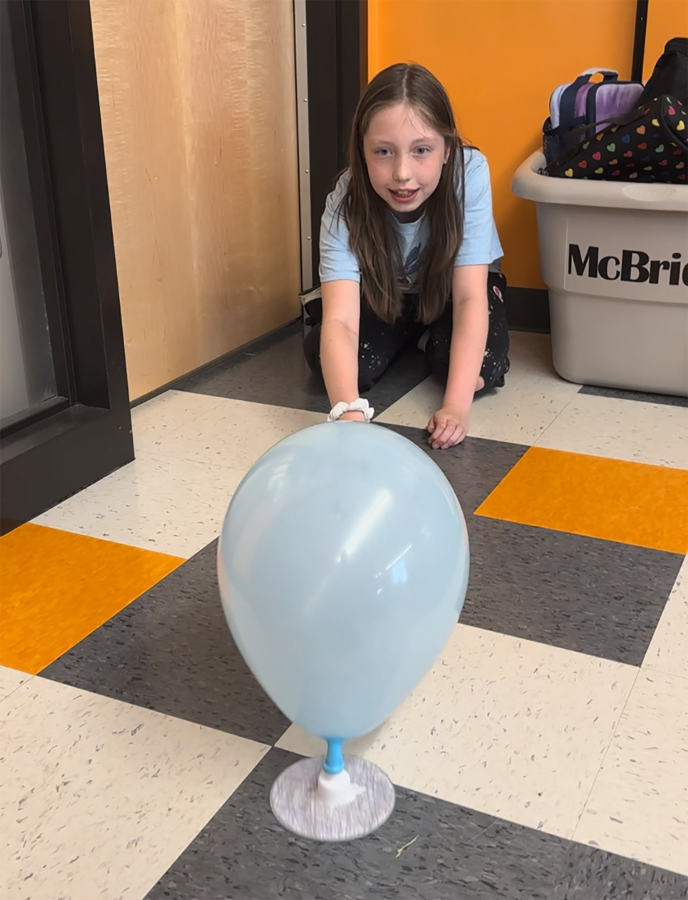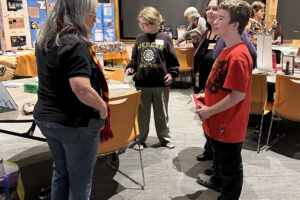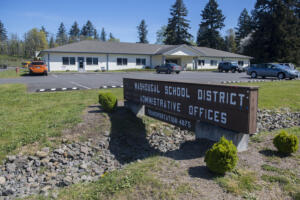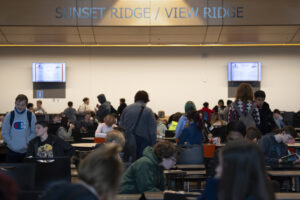Columbia River Gorge Elementary School fourth-grade students applied science and engineering concepts to build, test, and measure the results of balloon-powered hovercraft races earlier this year.
Students in Khrista McBride’s and Samantha Howards’ classrooms created the hovercrafts from CDs, balloons and bottle caps. The balloons were connected to the cap, which was glued onto the CD, creating a small gap for air to flow out, resulting in a small amount of lift to let the hovercrafts glide on hard surfaces.
“Students exploring is the most natural way to learn,” Howard said.
Each student tested their hovercraft in several settings and with different sizes of balloons, and measured the distance traveled so they could analyze the resulting data and draw conclusions about what makes a successful hovercraft.
“After the lesson, students reflected on the notes they gathered, and were surprised by the smaller balloons working better than large balloons,” McBride said. “The smaller size allowed their hovercraft to move further and faster due to the continuous volume of air flow.”





